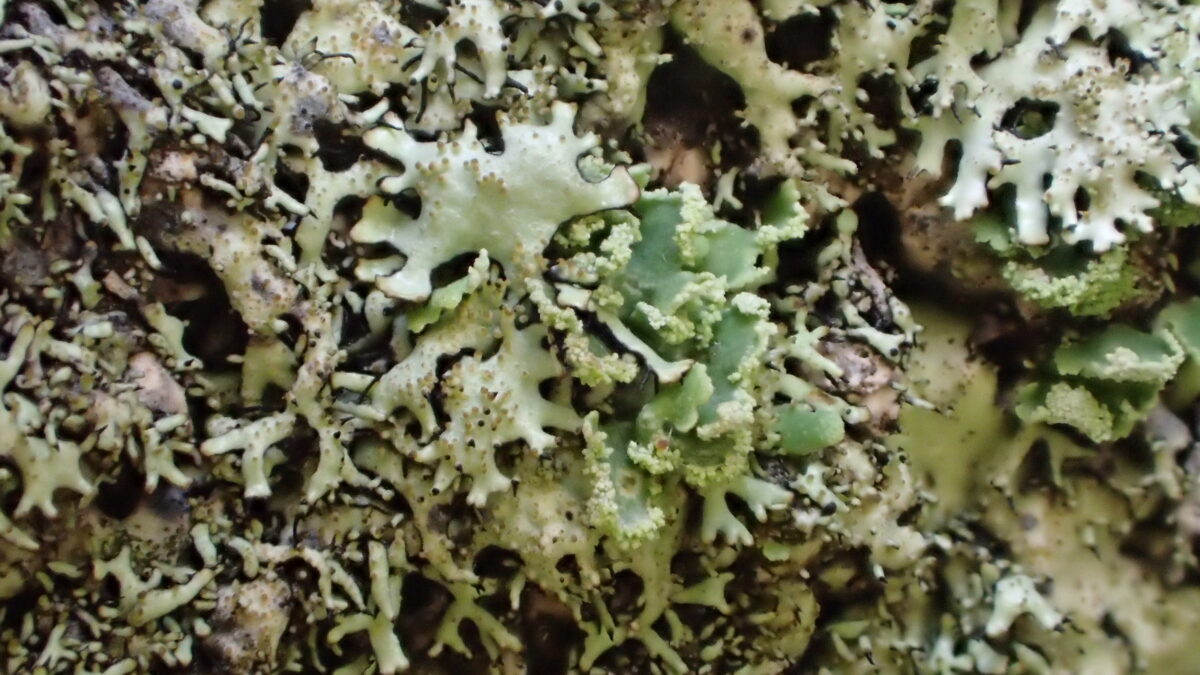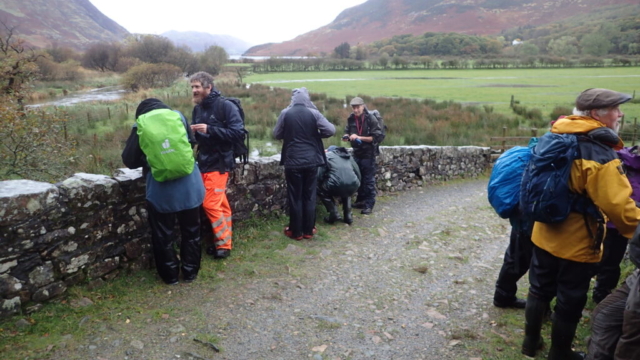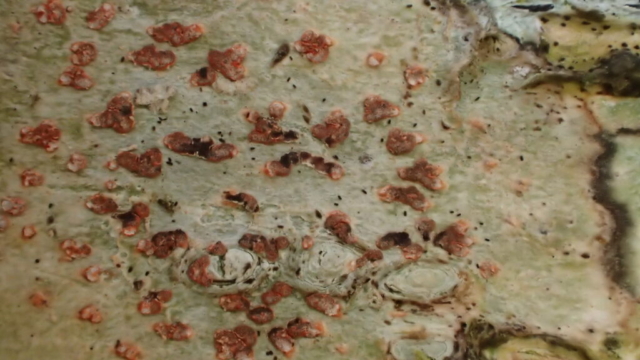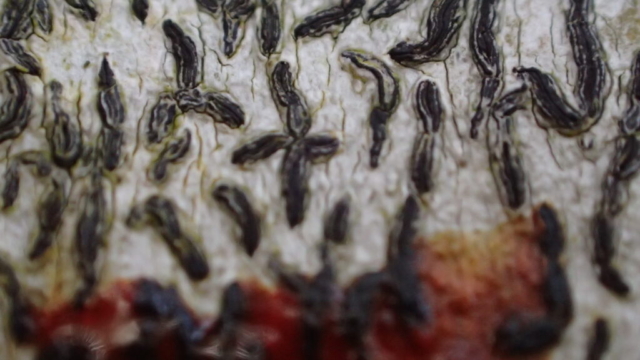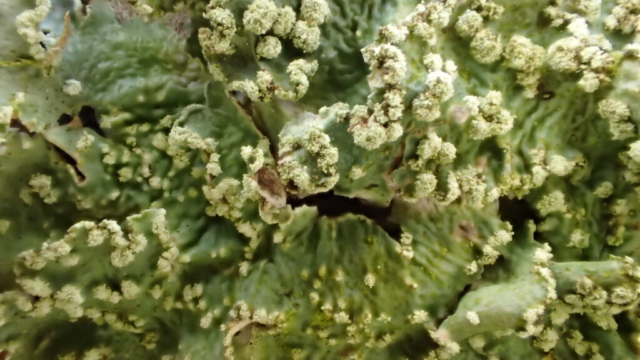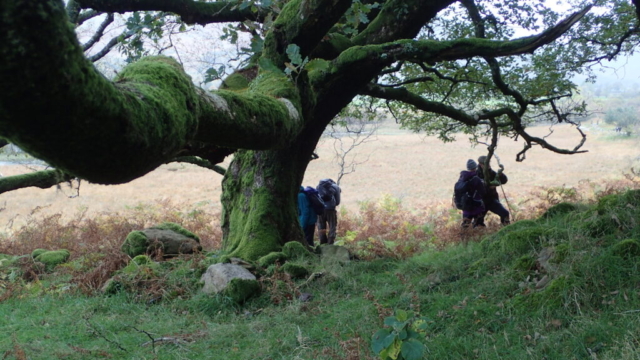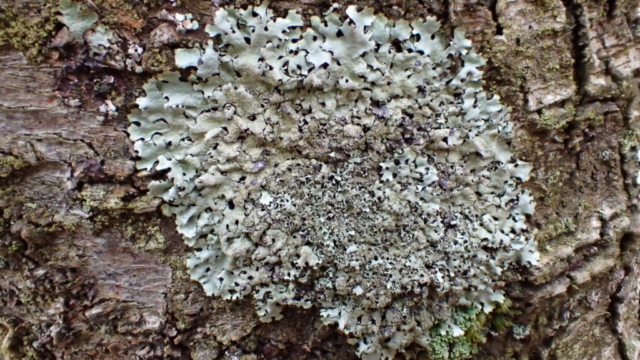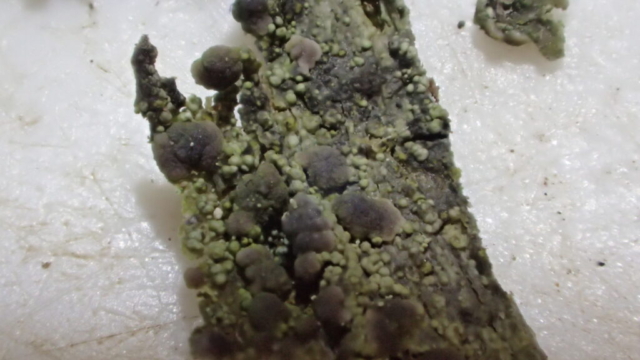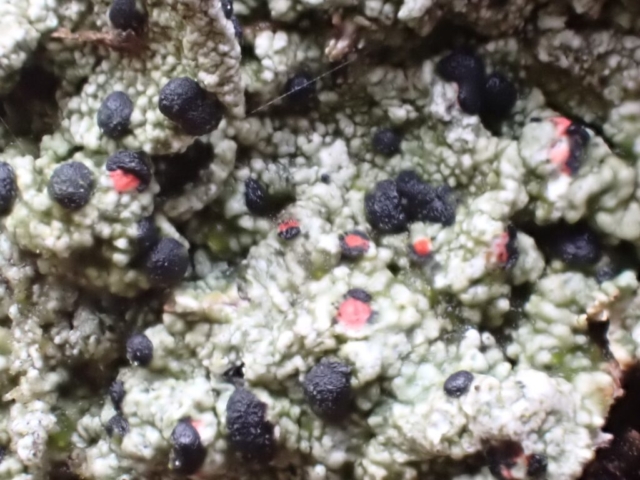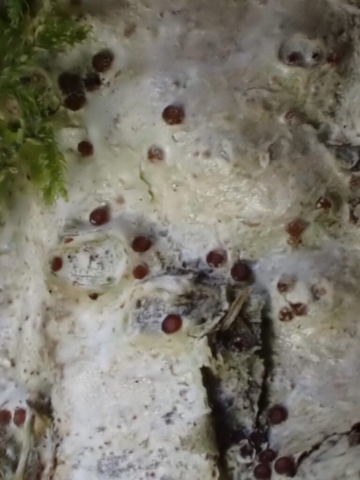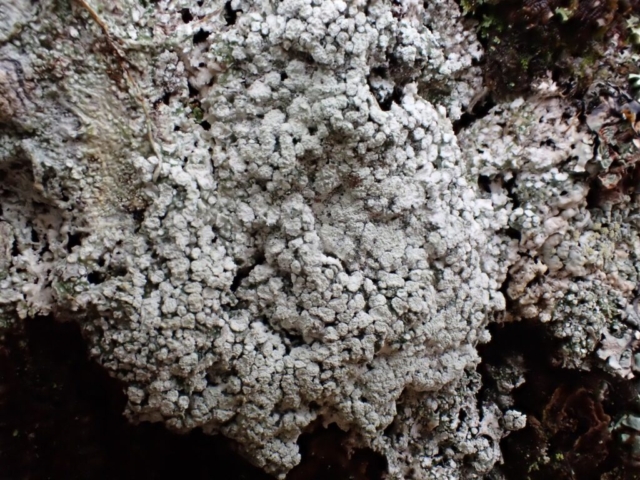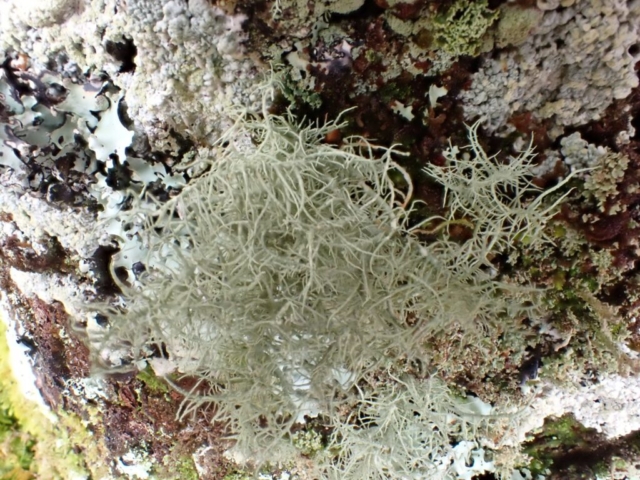Scales Wood sits on the steep north-east facing slopes opposite Buttermere village. It’s a marvellous place, the SSSI citation describes it as having “the best and most extensive example in the Lake District of a lichen community typical of upland, high rainfall oakwoods such as those found in the Scottish Highlands”. For some of us, it was our third visit and it nearly didn’t happen.
Storm Ashley made us look carefully at the weather maps. The rain was forecast to stop between 10 and 11 o’clock. So we pushed back the start time. The strongest winds were later on, and maybe we’d be sheltered by the fells. Indeed, as we eight lichen botherers gathered at the foot of the Newlands Road it really wasn’t very windy at all. But it was bucketing down. Morale sank as we waded along the ankle-deep river oops, sorry, path towards the bridge.
But the rain soon stopped, and it was almost pleasant as we wandered along the bottom of the wood, discussing Peltigera membranacea (bullate, tomentose, downturned lobes and long separate rhizines), Hypogymnia physodes (soredia on splayed hollow lobe ends) and Parmelia saxatilis ( linear pseudocyphellae and isidia). A ninth member of the party joined us. There was a selection of Pertusaria species to compare: amara (bitter), corallina (isidiate) and pertusa (pepperpot-style apothecial warts). It didn’t seem right to mention that the first two have now changed genus to Lepra…
We had lunch by a holly at the northwest end of the wood, and then began the climb up alongside a beck. To no-one’s surprise, we didn’t go very fast or get very far. There were Punctelia pseudocyphellae to look at (dot-like, rather than linear) and a good array of the upland rainforest specialities: Hypotrachyna laevigata with its smooth, clean-cut lobes; Sphaerophorus globosus the coral lichen, Mycoblastus sanguinarius with red patches under the apothecia. There were Micarea alabastrites and M. cinerea. A little Cetrelia olivetorum was found on a fallen oak with its longer pseudocyphellae and bare undersides near the lobe edges.
The star of the show, as ever in Scales Wood, was Hypotrachyna (until recently Parmelinopsis) horrescens. It’s a small, leafy thing, with isidia and cilia (hairs) on the surface. It looks like a diminutive version of Parmotrema crinitum, so I think of it as Desperate Dan’s little brother. It’s not quite on every tree, but there’s a lot of it in Scales Wood. What’s odd is that this is the most northerly known population. It’s only been found in one other Lakeland wood, and the main areas of it in Britain are north Wales, the New Forest and the south west. I wonder if a concerted hunt across these western valleys would reveal any more?
We also saw the yellowish crust Lecanora alboflavida on birch, not recorded at this wood before, although it is nearby in Ennerdale. Also new to this site was Schismatomma umbrinum, a brown granular crust which likes sheltered rocks in old woodland.
I also wonder if Lobarina scrobiculata is still here in Scales Wood. It was last seen in 1961. So it’s hard to imagine it has survived. But it’s quite a big wood, not easy to move around, and after three visits I feel like we have barely scratched the surface. So maybe, just maybe… oh we’ll have to come back for a fourth visit!
Text: Pete Martin
Photos: Pete Martin, Chris Cant
